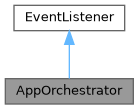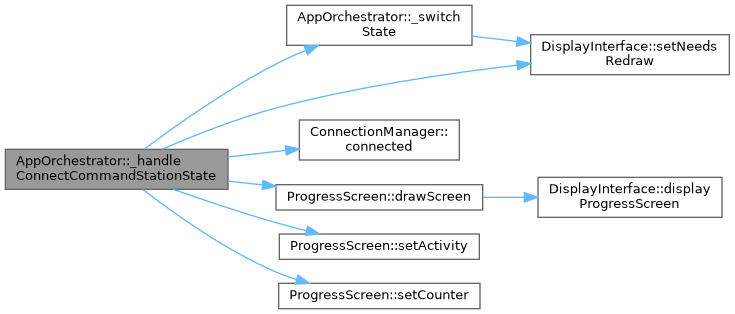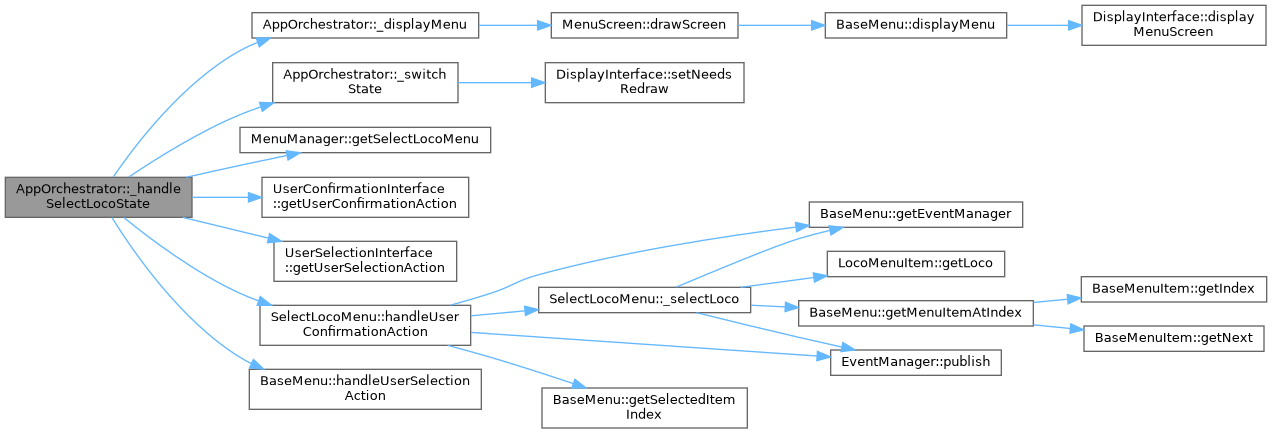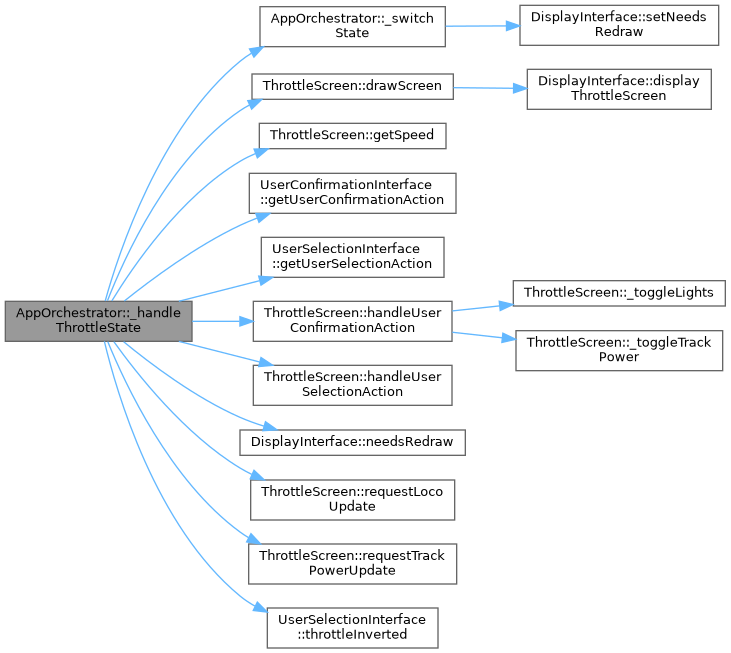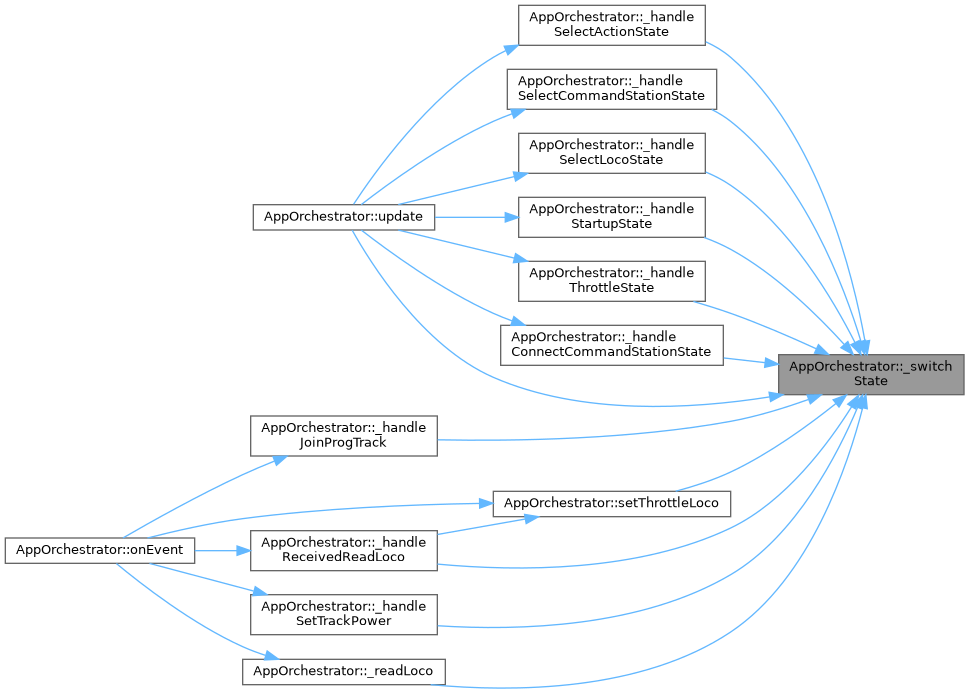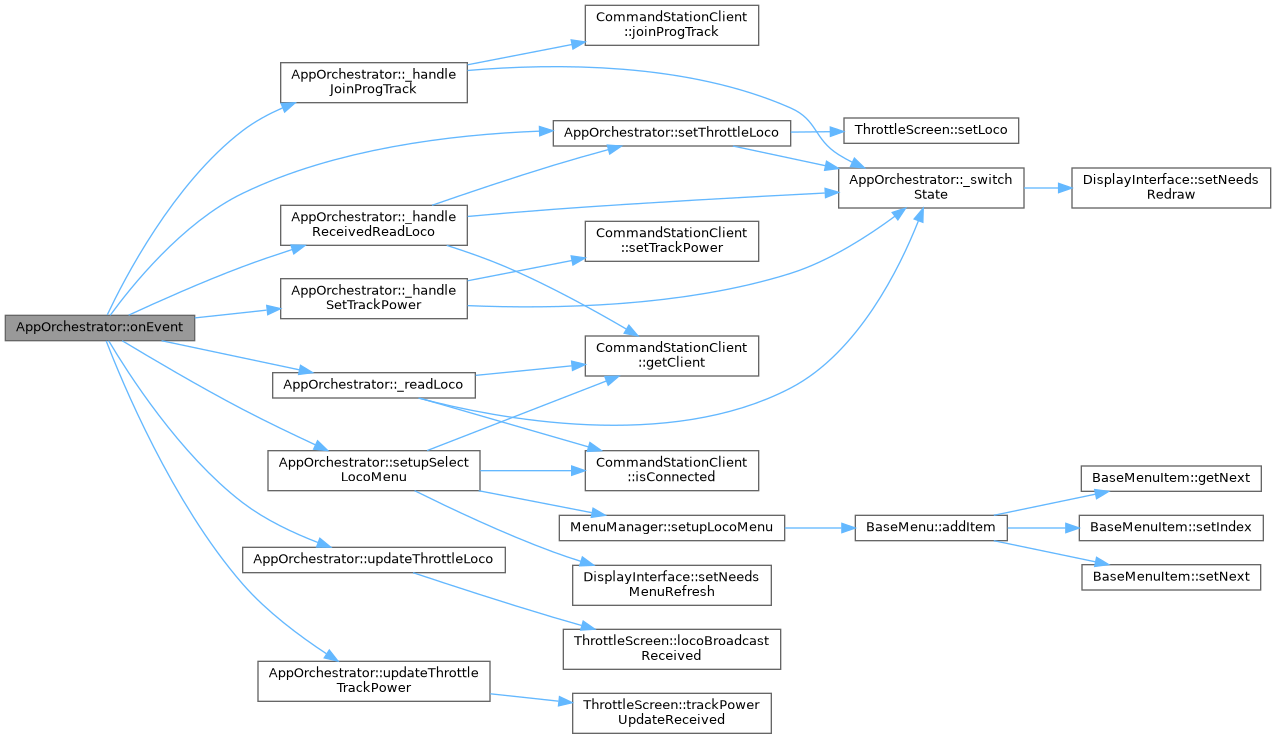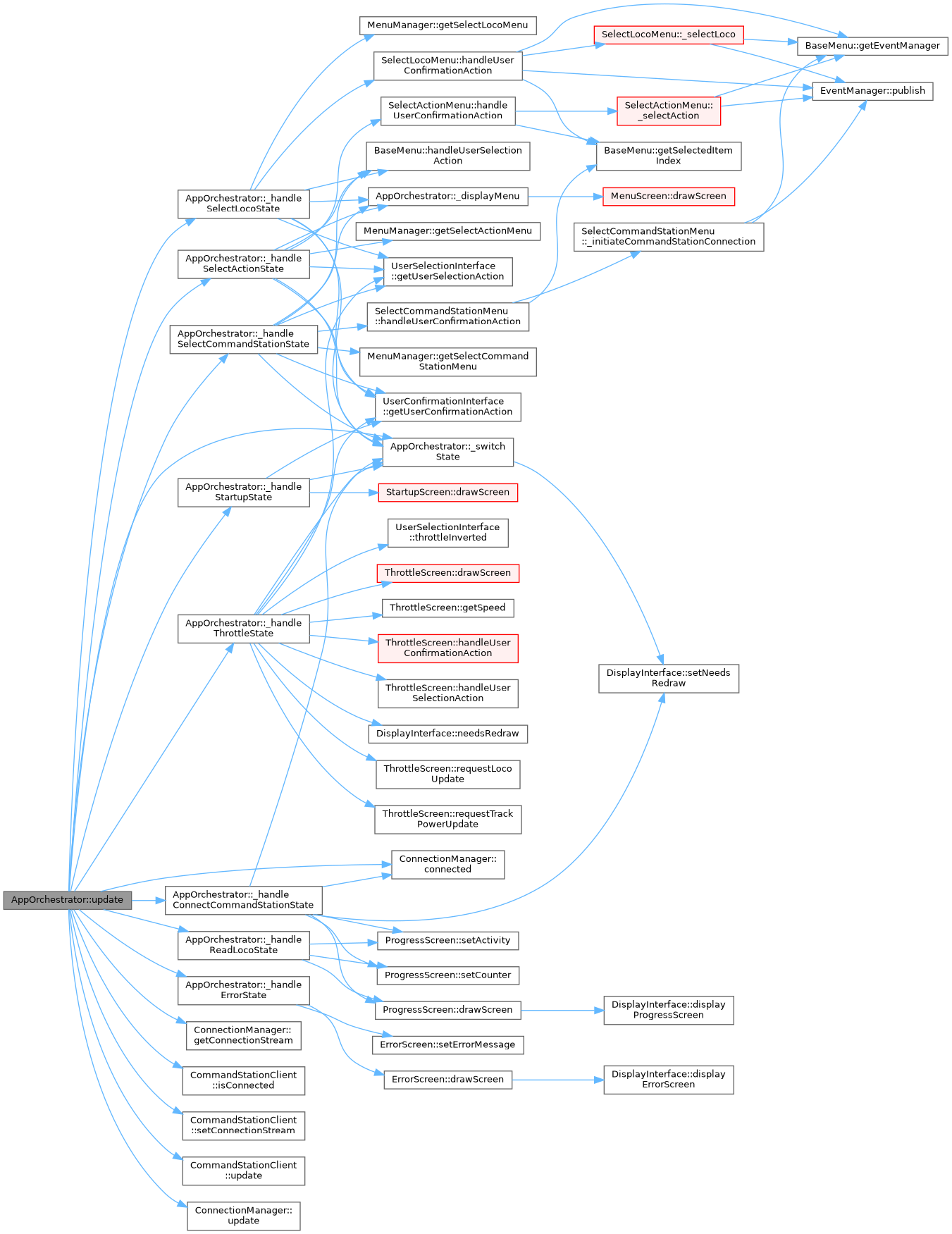This class is for the overall application orchestration to coordinate all the user interactions, screens, displays, connection management, and other application states.
More...
#include <AppOrchestrator.h>
This class is for the overall application orchestration to coordinate all the user interactions, screens, displays, connection management, and other application states.
◆ AppOrchestrator()
Constructor for the application orchestrator object.
- Parameters
-
| displayInterface | Pointer to the display interface to ensure is updated |
| connectionManager | Pointer to the connection manager |
| menuManager | Pointer to the menu manager |
| commandStationClient | Pointer to the CommandStation client |
| userConfirmationInterface | Pointer to the user confirmation interface to monitor |
| userSelectionInterface | Pointer the user selection interface to monitor |
| throttleScreen | Pointer to the throttle screen |
◆ _displayMenu()
| void AppOrchestrator::_displayMenu |
( |
BaseMenu * |
menu | ) |
|
|
private |
Display a menu.
- Parameters
-
| menu | Pointer to the menu to be displayed |
◆ _handleConnectCommandStationState()
| void AppOrchestrator::_handleConnectCommandStationState |
( |
| ) |
|
|
private |
Show the connection progress screen until a connection is made.
◆ _handleErrorState()
| void AppOrchestrator::_handleErrorState |
( |
| ) |
|
|
private |
Show any errors on screen and process user interaction to recover.
◆ _handleJoinProgTrack()
| void AppOrchestrator::_handleJoinProgTrack |
( |
| ) |
|
|
private |
Join programming track to main and return to the Select Loco menu.
◆ _handleReadLocoState()
| void AppOrchestrator::_handleReadLocoState |
( |
| ) |
|
|
private |
Show the read loco progress screen until it is read or times out.
◆ _handleReceivedReadLoco()
| void AppOrchestrator::_handleReceivedReadLoco |
( |
int |
address | ) |
|
|
private |
Set throttle to the received loco address when reading, or return to the select screen if failed.
- Parameters
-
| address | DCC address of the loco read from the programming track, or -1 says fail |
◆ _handleSelectActionState()
| void AppOrchestrator::_handleSelectActionState |
( |
| ) |
|
|
private |
Show the select action menu and process user interaction to select one.
◆ _handleSelectCommandStationState()
| void AppOrchestrator::_handleSelectCommandStationState |
( |
| ) |
|
|
private |
Display the CommandStation menu and process user interaction to select one.
◆ _handleSelectLocoState()
| void AppOrchestrator::_handleSelectLocoState |
( |
| ) |
|
|
private |
Show the loco selection menu and process user interaction to select one.
◆ _handleSetTrackPower()
| void AppOrchestrator::_handleSetTrackPower |
( |
Event |
event | ) |
|
|
private |
Set track power according to the provided Event details.
- Parameters
-
◆ _handleStartupState()
| void AppOrchestrator::_handleStartupState |
( |
| ) |
|
|
private |
Show the startup screen and wait for user interaction before continuing.
◆ _handleThrottleState()
| void AppOrchestrator::_handleThrottleState |
( |
| ) |
|
|
private |
Show the throttle screen and process user interaction with the throttle.
◆ _readLoco()
| void AppOrchestrator::_readLoco |
( |
| ) |
|
|
private |
Send read loco command to CommandStation client and set ReadLoco state for progress.
◆ _switchState()
| void AppOrchestrator::_switchState |
( |
AppState |
appState | ) |
|
|
private |
Switch application states.
- Parameters
-
| appState | State to switch to |
◆ begin()
| void AppOrchestrator::begin |
( |
| ) |
|
Anything required to be initiated when the orchestrator starts is called here.
◆ onEvent()
| void AppOrchestrator::onEvent |
( |
Event & |
event | ) |
|
|
virtual |
◆ setThrottleLoco()
| void AppOrchestrator::setThrottleLoco |
( |
Loco * |
loco | ) |
|
Set the loco being managed by the throttle screen.
- Parameters
-
| loco | Pointer to the loco object |
◆ setupSelectLocoMenu()
| void AppOrchestrator::setupSelectLocoMenu |
( |
| ) |
|
Method to setup the roster list in the SelectLocoMenu when the roster has been received.
◆ update()
| void AppOrchestrator::update |
( |
| ) |
|
Call this method at least once per main loop iteration to monitor for user interactions, ensure the display is updated, and connections are managed.
◆ updateThrottleLoco()
| void AppOrchestrator::updateThrottleLoco |
( |
LocoBroadcast |
locoBroadcast | ) |
|
Notify the throttle screen an update has been received for the associated loco.
- Parameters
-
| locoBroadcast | Loco broadcast data containing address, speed, direction, and function map |
◆ updateThrottleTrackPower()
| void AppOrchestrator::updateThrottleTrackPower |
( |
TrackPower |
trackPower | ) |
|
Notify the throttle screen of a track power update.
- Parameters
-
| trackPower | Track power state |
◆ _commandStationClient
◆ _connectionManager
◆ _currentAppState
| AppState AppOrchestrator::_currentAppState |
|
private |
◆ _displayInterface
◆ _errorScreen
◆ _menuManager
◆ _progressScreen
◆ _startupScreen
◆ _throttleScreen
◆ _userConfirmationInterface
◆ _userSelectionInterface
The documentation for this class was generated from the following files:
